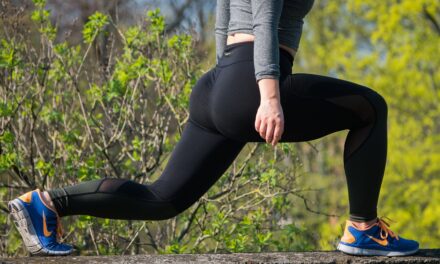Reaching the age of 50 is often perceived as a signal to slow down, but this couldn’t be further from the truth, especially when it comes to fitness. Embracing fitness over 50 isn’t just about maintaining health; it’s about enhancing life quality, improving longevity, and rediscovering vitality. In a society that often equates youth with fitness, this article aims to shatter stereotypes and provide practical, effective strategies for those embarking on or continuing their fitness journey post-50.
Why is fitness particularly crucial after 50? The reasons are numerous and compelling. As we age, our bodies undergo significant changes, including a natural decline in muscle mass, bone density, and metabolic rate. However, these changes are not a decree of inevitable decline. Instead, they serve as a call to action—a reminder of the importance of physical activity to counteract the effects of aging and maintain a high quality of life.
The narrative around fitness over 50 needs a paradigm shift. It’s time to move away from outdated notions that limit potential based on age and embrace a more empowering perspective. Fitness in your 50s and beyond is not about trying to keep up with the 20-somethings at the gym. It’s about understanding and honoring your body’s needs, capabilities, and potential. This journey is about finding what works for you, pushing the boundaries of what you thought possible, and celebrating each victory, no matter how small.
In the following sections, we will dive into the world of fitness after 50, exploring evidence-based approaches to exercise, the role of nutrition, and how to adapt to the body’s evolving needs. This guide is designed to inspire, inform, and motivate, helping you navigate the landscape of fitness after 50 with confidence and enthusiasm. So, whether you are a fitness veteran or just starting, get ready to embark on an enlightening journey towards a fitter, healthier, and more vibrant you.
Finding Your Fitness Path After 50
As you embark on or continue your fitness journey after 50, understanding how to effectively adapt your approach to exercise and nutrition is key. This stage of life brings unique challenges and opportunities, and a tailored approach is essential for optimal results and sustained health.
Exercise: A Balanced Approach
Exercise after 50 should focus on three main components: cardiovascular fitness, strength training, and flexibility/balance exercises. Cardiovascular activities like brisk walking, cycling, or swimming are crucial for heart health and weight management. Strength training, contrary to common misconceptions, is not just for the young. It’s vital for maintaining muscle mass, supporting metabolism, and improving bone density. Incorporating weight-bearing exercises, resistance bands, or bodyweight workouts can significantly impact your strength and overall fitness. Flexibility and balance exercises such as yoga or tai chi are also essential, as they reduce the risk of falls and improve overall mobility.
Nutrition: Fueling Your Body Right
Nutrition plays a pivotal role in fitness over 50. As metabolism naturally slows down with age, nutritional needs change. A focus on nutrient-dense foods, adequate protein intake, and hydration is crucial. Lean proteins, whole grains, fruits, vegetables, and healthy fats should be the cornerstone of your diet. Additionally, staying hydrated aids in digestion and keeps your energy levels up for exercise.
Adapting to Your Body’s Needs
Listening to your body is more important than ever. Recovery times may be longer, and certain exercises might not suit you as they once did. It’s essential to adapt workouts to your current fitness level and be mindful of any physical limitations. Regular check-ups with a healthcare provider can ensure that you stay on the right track and help in addressing any health issues that might affect your fitness regimen.
The Role of Recovery
Recovery is an integral part of fitness, especially after 50. Adequate rest, sleep, and recovery practices such as stretching, foam rolling, or even massages help prevent injuries and aid in muscle recovery. Incorporating rest days into your exercise routine allows your body to recover and grow stronger.
In the next section, we will summarize the key points and offer actionable steps to help you navigate the path of fitness over 50 with confidence and success.
Embracing a Fit and Healthy Lifestyle After 50: Summary and Actionable Steps
Embarking on or continuing a fitness journey after 50 can be one of the most rewarding decisions of your life. It’s about investing in your health, discovering new strengths, and enjoying an active lifestyle. Let’s summarize the key points and outline actionable steps to help you thrive in your fitness journey after 50.
Key Points for Fitness Success After 50
- Diverse Exercise Routine: Incorporate a mix of cardiovascular, strength, flexibility, and balance training into your fitness regime. This holistic approach addresses various aspects of aging and promotes overall health.
- Nutrition Matters: Focus on a balanced diet rich in proteins, whole grains, fruits, vegetables, and healthy fats. Proper nutrition supports your exercise goals and overall well-being.
- Listen to Your Body: Pay attention to your body’s signals and adapt your exercise intensity and duration accordingly. It’s important to recognize and respect your limits to avoid injuries.
- Recovery Is Crucial: Allocate adequate time for rest and recovery. Incorporate activities like stretching, yoga, or leisure walks on rest days to aid in muscle recovery and prevent burnout.
Actionable Steps to Enhance Fitness Over 50
- Set Realistic Goals: Define clear, achievable fitness goals. Whether it’s improving strength, enhancing flexibility, or boosting cardiovascular health, having specific targets can keep you motivated.
- Create a Structured Plan: Develop a workout schedule that includes various types of exercises. Consider consulting a fitness professional to design a program tailored to your needs and goals.
- Track Your Progress: Use a journal or fitness apps to monitor your exercise routine, dietary habits, and overall progress. This can help in staying on track and making necessary adjustments.
- Stay Educated: Keep learning about fitness and health. Staying informed about the latest research and trends can provide new insights and techniques to enhance your fitness journey.
- Seek Support: Join a community or group fitness class. Surrounding yourself with like-minded individuals can provide encouragement, advice, and a sense of camaraderie.
Remember, fitness over 50 is not just about physical health; it’s about leading a fuller, more active life. With the right approach, dedication, and a positive mindset, you can achieve remarkable fitness milestones. Embrace the journey with enthusiasm, and celebrate each step forward in your path to a healthier, fitter, and happier you.






